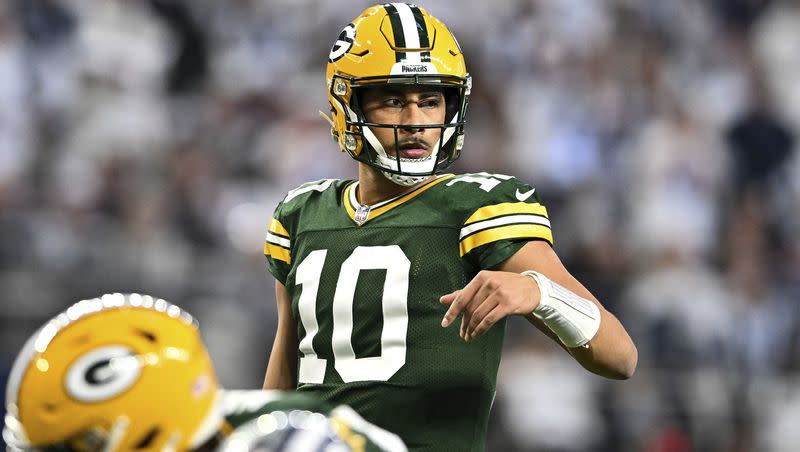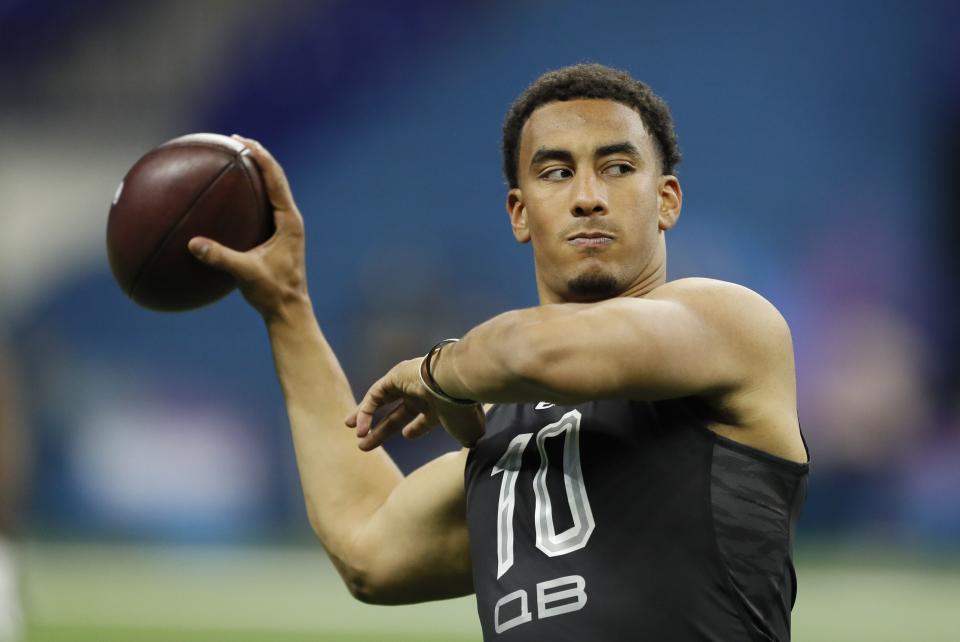Packers exercised patience and wisdom in parking Jordan Love on the sideline for three years

If NFL coaches and general managers are so smart then why don’t they pay attention to what Jordan Love and the Green Bay Packers just pulled off?
Again.
Why do teams continually throw rookie quarterbacks into the starting lineup and watch them flounder instead of parking them on the sideline for a season or two or three and let them learn and adjust to a newer, faster game?
Know how many games Love played as a rookie?
Zero.
Know how many games he was the backup quarterback?
Zero.
He was inactive every game. Didn’t even put on a uniform. Aaron Rodgers was the starter and Tim Boyle was his backup.
Over the next two seasons he saw spot duty in nine games and started one. After three years in the league, he had thrown just 83 passes in the NFL.
You know what happened next. Aaron Rodgers was shipped to the moribund New York Jets, like his predecessor (Brett Favre), and the Packers made Love the starter for the 2023 season. After a so-so start, he caught fire at midseason and ever since then he has been the best quarterback on the planet. Last Sunday the former Utah State star performed calmly and brilliantly in the Packers’ win over the heavily favored Dallas Cowboys on the road to put them into this week’s divisional round.
Related
Jordan Love’s unforgettable first playoff start leads Utah ties in Sunday’s NFL action
Patrick Mahomes credits Alex Smith after Chiefs’ Super Bowl win
Would the story be the same if Love had been made the starting quarterback as a rookie? Probably not. He wasn’t even close to being ready.
Love, the 26th overall pick of the 2020 draft, finally got his chance in his fourth season, and the patience of both Love and the Packers has been rewarded.
There’s precedence for this. Love’s predecessor, Rodgers, the 24th overall pick in 2005, also waited three years to play while apprenticing behind Favre. Rodgers is on his way to the Hall of Fame.
Steve Young waited even longer for his turn and he is in the Hall of Fame. After sitting behind Jim McMahon for a chance to start at BYU, he was rushed into the starting lineup with the L.A. Express of the USFL and then the Tampa Bay Buccaneers of the NFL. He won just three of 19 games for the Bucs while throwing more interceptions than touchdowns and completing only about half of his passes. His career was going nowhere.
He got a reset when the 49ers traded for him and put him on the sideline behind Joe Montana. Young didn’t become the team’s full-time starter until his seventh season in the league, and that’s not counting two more seasons with the L.A. Express.
There are many other examples of such patience paying off. Carson Palmer, Michael Vick, Patrick Mahomes, Drew Brees and Tom Brady became starters in their second seasons. Philip Rivers and Tony Romo didn’t start until their third seasons. Rodgers, Kirk Cousins and Jimmy Garoppolo didn’t start until their fourth seasons.
But many or most teams can’t resist the urge to put rookie quarterbacks in the starting lineup. Five quarterbacks were taken with the first 15 overall picks of the 2021 draft. Only one of the five, Trevor Lawrence, has succeeded. Trey Lance didn’t play a down this season. Justin Fields’ future with the Bears is uncertain. Mac Jones and Zach Wilson will likely be traded in the offseason. All but Lance were thrown into the starting lineup immediately.
Last summer CBS researched this phenomenon. “How much do QBs’ fortunes rise or fall based on how long they sit?” writer Jared Dubin wondered. He studied the 91 quarterbacks drafted from 2000-19 who became the full-time starting quarterback at some point.
• 29 were made the starter immediately.
• 21 were promoted to the starting job some time during the first eight weeks.
• 14 became the starter in the second half of their rookie season.
That means 64 of 91 quarterbacks became full-time starters as rookies. Of the remaining 27 quarterbacks, 16 became starters in their second season, three in their third season and eight in their fourth season.
Related
Next Dubin broke down the performances of quarterbacks in each category. He concluded by writing, “In almost every (statistical) category, the group of players that took over in Year 3 performed the best, while the players who became starters in the second half of their rookie season performed the worst.”
Actually, quarterbacks who became starters in Year 2, 3 and 4 all had higher completion percentages, yards per attempt, touchdown pass percentage, passer ratings and lower interception percentages than the rookie starters.
There certainly have been many quarterbacks who eventually became good or great quarterbacks after being named the starter as rookies — among them, Joe Burrow, Andrew Luck, Matt Stafford, Matt Ryan, Andy Dalton and Russell Wilson. But there have been many more who have flopped, and teams can never go wrong by giving a rookie quarterback a chance to practice and learn for a year or more without the psychic and physical damage that can occur from starting right out of the gate. Wilson’s camp believes his experience with the Jets — which includes 113 sacks in 33 games — has done just that.
The Packers apparently saw the big picture and exercised admirable patience with Love. They recognized his potential and were willing and able to develop it. The Packers have endured years of abuse among media and fans for drafting Love in the first round instead of drafting players at other positions to help Rodgers. Apparently, the Packers knew what they were doing.
They had been down this road previously. They drafted Rodgers when Favre was still playing well at the age of 36 (he would play six more seasons and lead the Packers to a 13-3 record in his final year with the team). Then the Packers turned around and did it again 15 years later, drafting Love when Rodgers was on top of his game at the age of 37 (he would be named the league MVP the next two years).
It’s a vivid lesson for the rest of the league, but is anybody paying attention?


